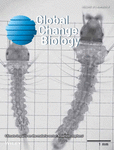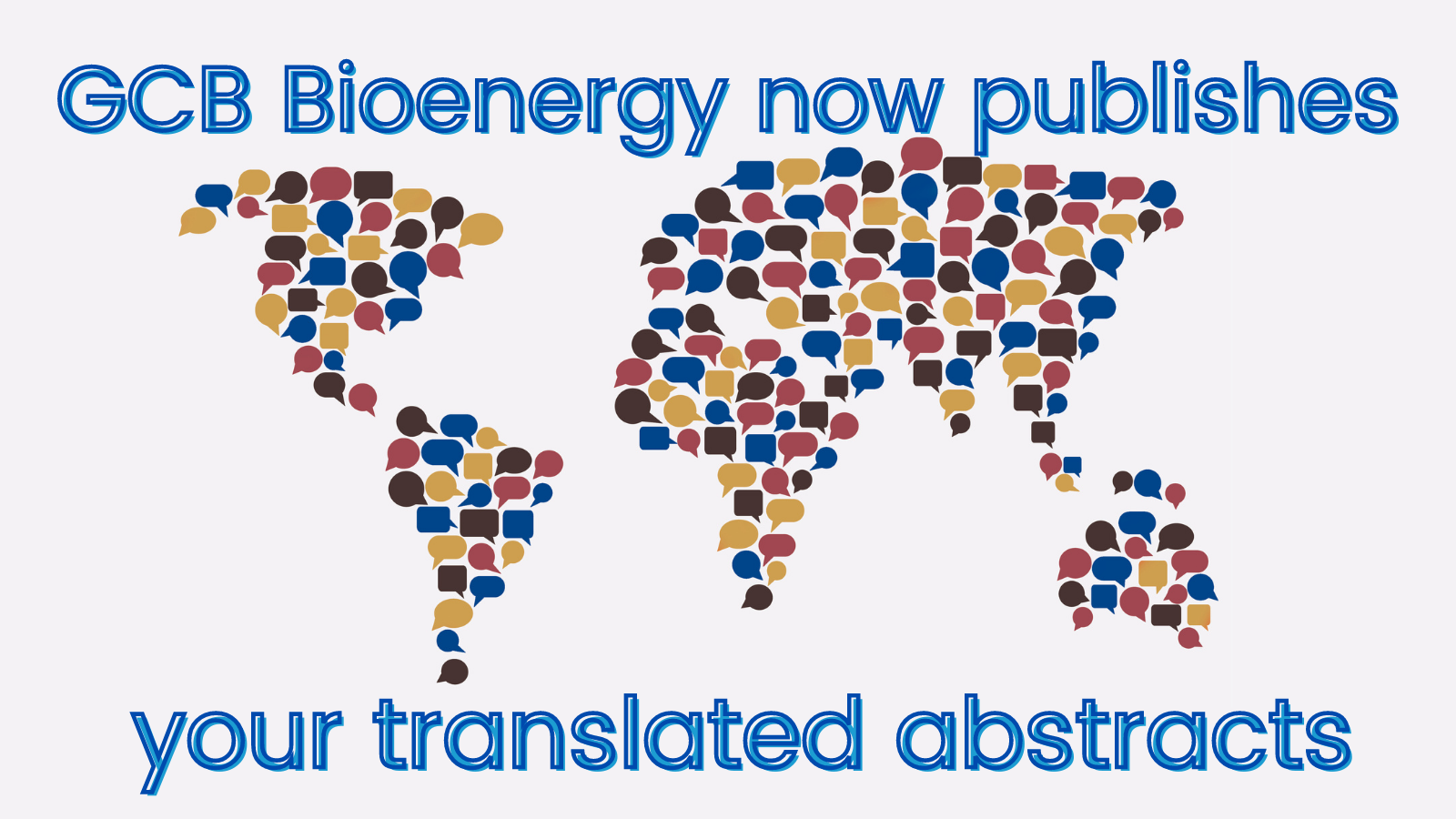Journal list menu
Export Citations
Download PDFs
ISSUE INFORMATION
OPINION
Changes in perspective needed to forge ‘no-regret’ forest-based climate change mitigation strategies
- Pages: 246-257
- First Published: 25 December 2021

Forest-based mitigation is an important strategy to prevent catastrophic climate change, but large disagreement prevails if it should rely on increased harvest for substituting fossil-energy based products and processes, or on enhanced carbon sequestration in forest carbon stocks. To move beyond this dichotomy, we argue for a new perspective in sustainable forest research: instead of assessing how maximum wood production can be achieved at low forest emissions, we propose to take a desired forest carbon sink as starting point to quantify compatible harvest levels. Such an approach is suited for safeguarding urgently-needed carbon sinks and to forge “no-regret” mitigation strategies.
How contradictory EU policies led to the development of a pest: The story of oilseed rape and the cabbage stem flea beetle
- Pages: 258-266
- First Published: 07 January 2022
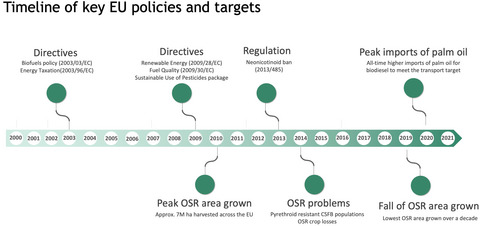
EU policies to reduce greenhouse gas emissions (Biofuels Policy (2003), Energy taxation, and Renewable energy (2009)) led to a 78% increase in the oilseed rape (OSR) area grown across Europe. The consequential increase in pest incidence and development of pyrethroid insecticide resistance, plus the ban on neonicotinoid seed treatments (2014), led to severe pest problems from cabbage stem flea beetle (Psylliodes chrysocephala) resulting in the reduction in area of OSR grown and a need for palm-oil imports. Integrated Pest Management can reduce insecticide dependency and should be written into new EU and UK policies, and the development of tools required for implementation and use by farmers incentivised.
REVIEW ARTICLE
Integrated pest management strategies for cabbage stem flea beetle (Psylliodes chrysocephala) in oilseed rape
- Pages: 267-286
- First Published: 16 December 2021
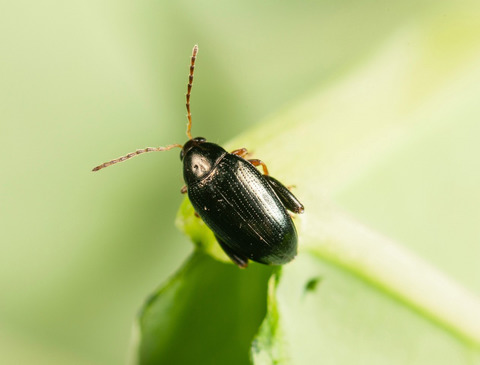
Oilseed rape is the second largest source of vegetable oil globally and the primary biofuel feedstock in the European Union, but production is threatened by Psylliodes chrysocepaha – the cabbage stem flea beetle (CSFB). Due to the ban on neonicotinoid seed treatments and development of pyrethroid resistance, CSFB can no longer reliably be controlled using insecticides alone. We review the lifecycle of CSFB and the current options available for Integrated Pest Management (IPM). A full IPM strategy for CSFB barely exists. We summarise the main knowledge gaps and future research needed to facilitate development of an IPM strategy for this pest.
ORIGINAL RESEARCH
Water use efficiency of poplars grown for biomass production in the Midwestern United States
- Pages: 287-306
- First Published: 18 August 2021
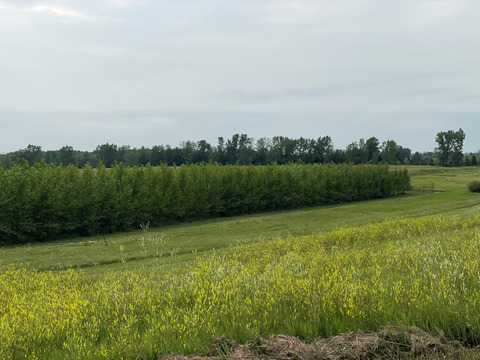
Water availability and site conditions affect poplar productivity and performance due to genotype × environment interactions, indicating the need for genotypes with high water use efficiency (WUE) and maximal yield. Drought causes increased accumulation of δ13C carbon isotope in tree tissues and strongly correlates with their WUE. We evaluated differences in WUE and productivity among poplar genotypes grown in the Midwestern United States to identify genotypes with high WUE for future deployment. Clones varied in their water-conserving strategies, acting as “water conservers” or “water consumers”, although it was evident that WUE cannot be solely described with carbon isotope accumulation.
Global implications of crop-based bioenergy with carbon capture and storage for terrestrial vertebrate biodiversity
- Pages: 307-321
- First Published: 25 November 2021
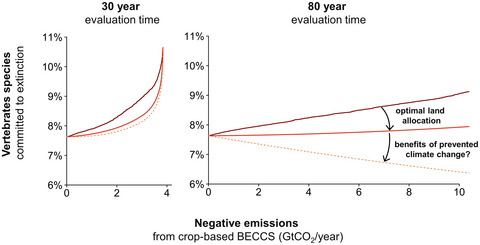
Bioenergy with carbon capture and storage (BECCS) could provide negative CO2 emissions to mitigate climate change, but if based on crops, the associated land requirements threaten biodiversity. Here, we show that sequestering 0.5–5 GtCO2/year with lignocellulosic crop-based BECCS requires hundreds of Mha of land and would commit tens of terrestrial vertebrate species to extinction. When considered over a 30-year evaluation period, these land-use impacts likely outweigh the benefits of prevented climate change to vertebrate richness, though this could reverse over longer evaluation times. We conclude that species loss is reduced with longer BECCS lifetimes and optimal land allocation.
Assessing the potential for unaccounted emissions from bioenergy and the implications for forests: The United States and global
- Pages: 322-345
- First Published: 06 January 2022
We quantify and map regional flows of wood pellets under a range of mitigation scenarios. We find that demand for bioenergy will vary widely under different climate mitigation scenarios, with more ambitious pathways driving higher global demand, more intense forest harvest, and a potential reduction in forest carbon sequestration in the U.S. Southeast, a key supply region. Additionally, differences in carbon accounting among countries could encourage arbitrage by bioenergy producers, with the potential to inflate the industry to levels that diminish the forest carbon sink and lead to underestimates of global emissions.
A new bioenergy model that simulates the impacts of plant-microbial interactions, soil carbon protection, and mechanistic tillage on soil carbon cycling
- Pages: 346-363
- First Published: 12 January 2022
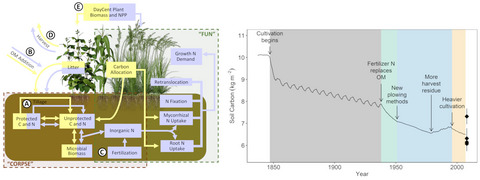
Bioenergy has the potential to help slow climate change. This potential relies on bioenergy being carbon neutral. To achieve neutrality, bioenergy crops must enhance carbon sequestration in soils. However, predictions of bioenergy impacts on soil carbon remain uncertain. We addressed this uncertainty by developing a predictive model that includes how plants fuel the activity of soil microbes and how tillage leads to soil carbon losses by increasing the ability of microbes to break down soil carbon. Our model aids predictions of the best combination of crop, management, and location that enhance bioenergy’s ability to achieve carbon neutrality.
Global soil organic carbon changes and economic revenues with biochar application
- Pages: 364-377
- First Published: 08 December 2021
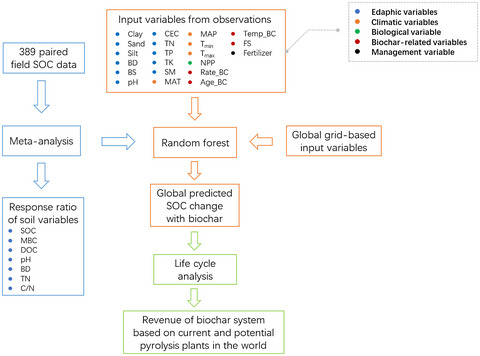
This study explores the response of global soil organic carbon (SOC) to biochar application using a machine learning method and evaluates the economic revenues of biochar system based on current and potential pyrolysis plants using the life-cycle analysis. Biochar addition significantly increased SOC by 45.8% on average with large regional variations. Potential revenue of building new plants is high in regions like America and Europe but low in regions with low crop residues availability and inconvenient transportation (e.g., Africa). The assessment of global biochar implementation has important influence on achieving both national and global CO2 emissions reduction targets.
Redesign of dryland apple orchards by intercropping the bioenergy crop canola (Brassica napus L.): Achieving sustainable intensification
- Pages: 378-392
- First Published: 21 December 2021

Dryland apple orchards are redesigned by intercropping the bioenergy crop canola aiming for sustainable intensification. Intercropping canola increases soil organic carbon and causes apple tree to allocate more fine roots in deeper soils. Higher intercropping density does not lead to severer water deficit but sequestrates more carbon than lower density, and therefore seems more appropriate for intercropping in dryland orchards.
Intra- and inter-annual variability of nitrification in the rhizosphere of field-grown bioenergy sorghum
- Pages: 393-410
- First Published: 07 January 2022
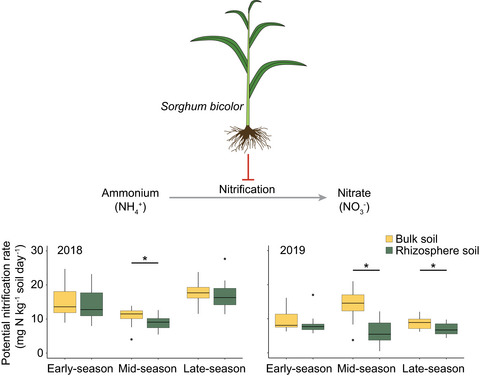
We measured key nitrogen cycling metrics, including the suppression of potential nitrification, across two growing seasons in the rhizosphere of Sorghum bicolor, a candidate annual bioenergy crop. The degree to which sorghum suppressed nitrification depended upon the growth stage of sorghum and also varied between years due to differing weather conditions. Overall, we found inter- and intra-annual variation in nitrification suppression in the rhizosphere of field-grown biomass sorghum, suggesting that plant phenology and environmental conditions should be considered when devising strategies to improve the nitrogen sustainability of this annual bioenergy crop.
Quantifying the effects of varietal types × management on the spatial variability of sorghum biomass across US environments
- Pages: 411-433
- First Published: 19 December 2021
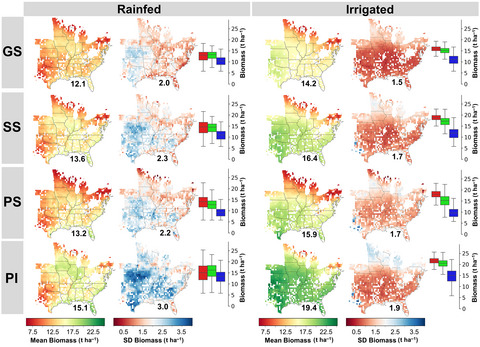
Regional-scale estimates of sorghum biomass allow identification of optimum genotype×environment×management (G×E×M) combinations for bioenergy. We determined the degree of contribution of G, E, and M to sorghum biomass production in the United States. Using a modeling approach at field and country scale, biomass was simulated for irrigated and rainfed conditions for four sorghum varietal types. Varietal type had the greatest effect on biomass variability independent of the environment and irrigation strategy. We demonstrated the utility of quantifying the main G×E×M drivers of biomass variability, and the contribution of these drivers to variation in sorghum biomass production.





